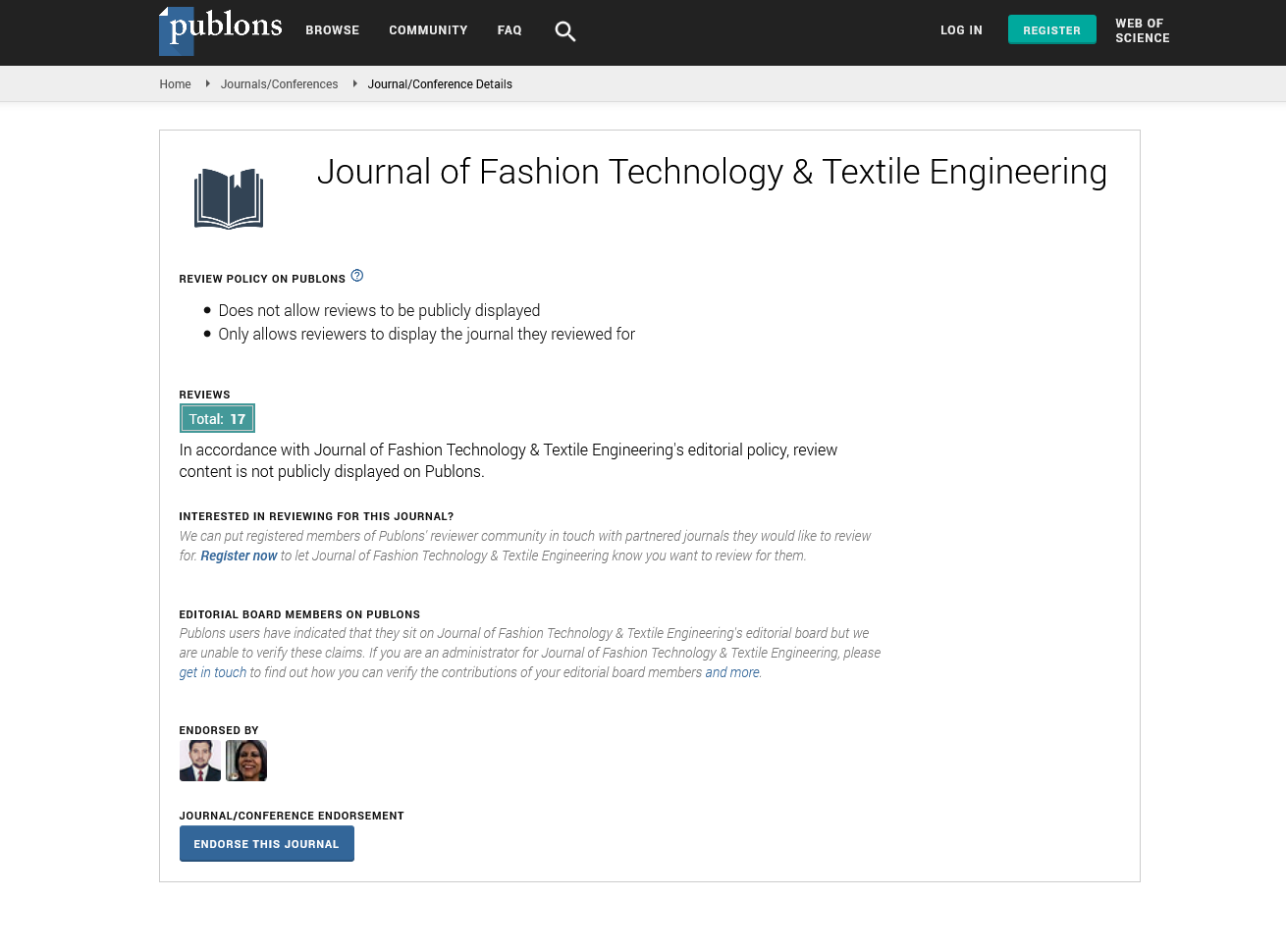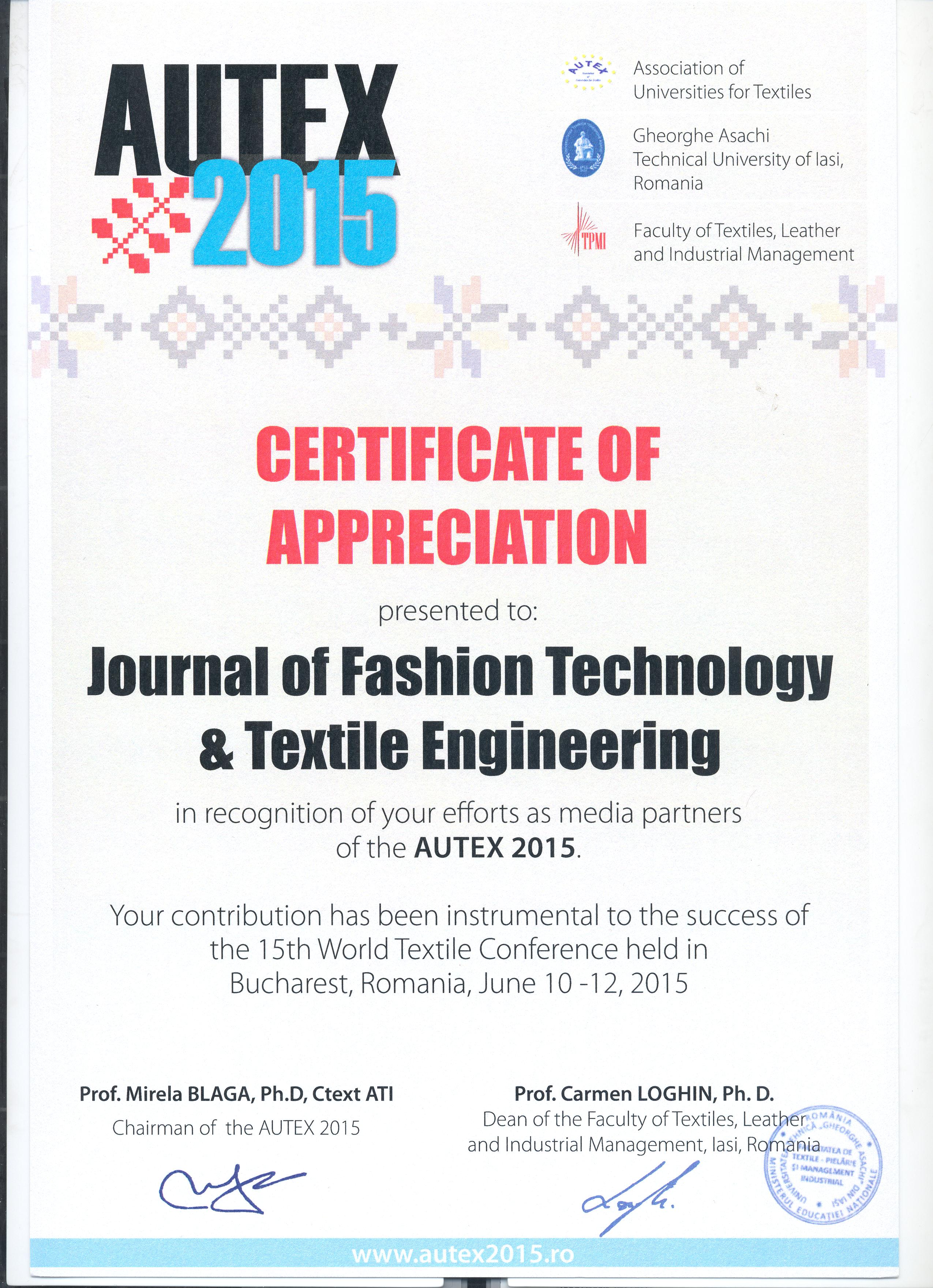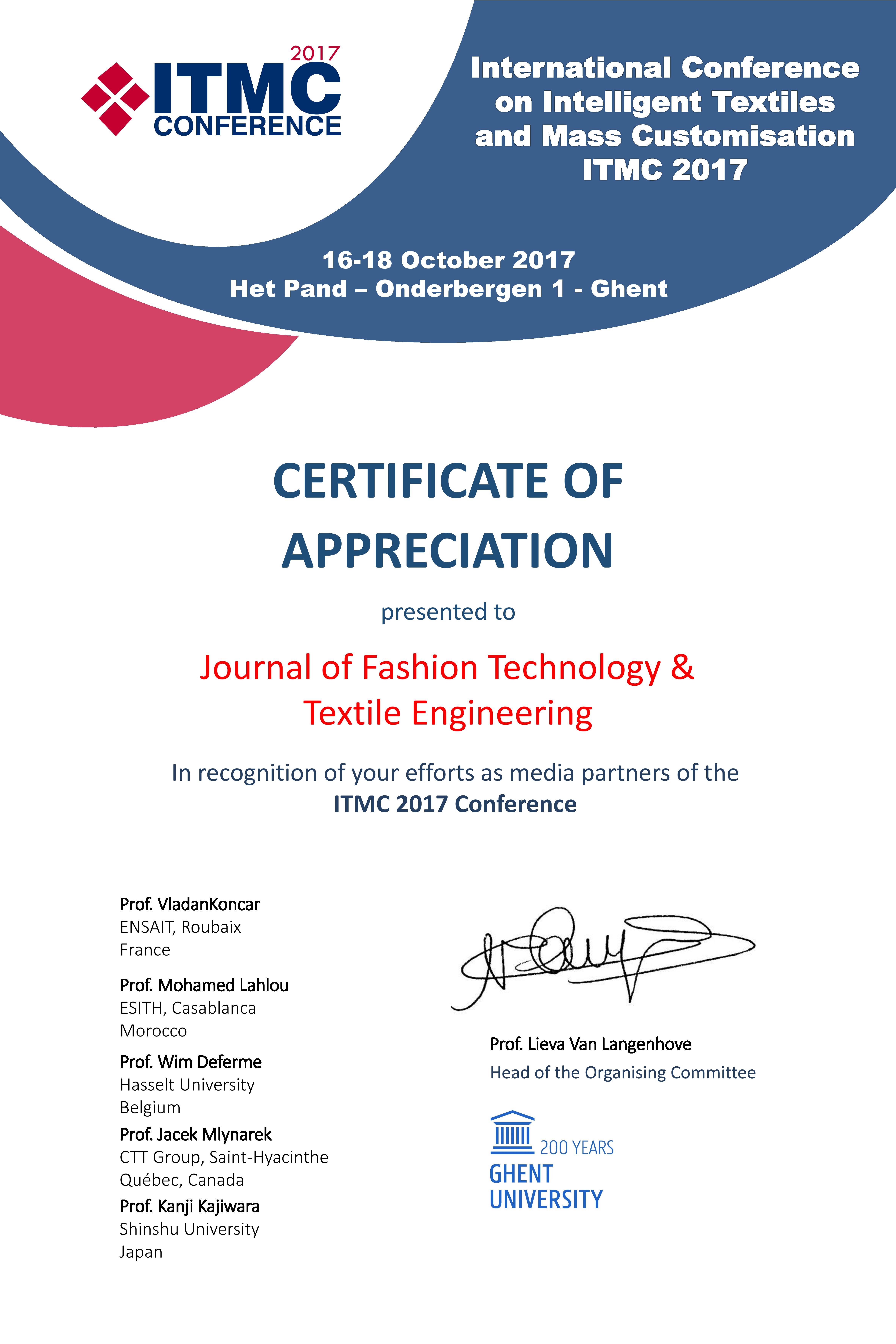Opinion Article, J Fashion Technol Textile Vol: 12 Issue: 5
Colour-Changing Fabrics: Chemical Innovations for Adaptive Fashion
Marta Nowak*
1Department of Clothing and Textile Science, Warsaw University of Technology, Warsaw, Poland
*Corresponding Author: Marta Nowak,
Department of Clothing and Textile
Science, Warsaw University of Technology, Warsaw, Poland
E-mail: marta_nowak24@gmail.com
Received date: 23 September, 2024, Manuscript No. JFTTE-24-152104;
Editor assigned date: 25 September, 2024, PreQC No. JFTTE-24-152104 (PQ);
Reviewed date: 09 October, 2024, QC No. JFTTE-24-152104;
Revised date: 17 October, 2024, Manuscript No. JFTTE-24-152104 (R);
Published date: 25 October, 2024, DOI: 10.4172/2329-9568.1000376.
Citation: Nowak M (2024) Colour-Changing Fabrics: Chemical Innovations for Adaptive Fashion. J Fashion Technol Textile 12:5.
Description
The world of fashion is always developing with innovative materials that impulse limits, providing more than just aesthetics. One such innovation is colour-changing fabrics, which are transforming the consider about clothing. These fabrics can change their colour in response to external stimuli, such as heat, light or moisture providing endless possibilities for design, practicality and functionality. Colourchanging fabrics are based on chemical innovations that operate the molecular structure of the fibers. These fabrics incorporate special compounds called chromophores, which react to environmental factors and alter their colour. This phenomenon is most often seen in thermochromic and photochromic fabrics, each responding to different stimuli. Thermochromic fabrics change Colour when exposed to temperature variations. This effect is achieved by embedding thermochromic dyes into the fibers, which respond to heat by altering their molecular structure. These fabrics can be designed to change from one colour to another or fade completely depending on the temperature they encounter. For instance, a fabric might turn from blue to red when exposed to warmth or reveal a hidden pattern as the temperature increases.
Thermochromic fabrics are not just a fashion statement but also have practical applications. They can be used in clothing to indicate changes in body temperature, such as in workout gear that shifts colour when the wearer becomes hot. They are also found in protective clothing, where the colour change can signal dangerous temperature levels or exposure to high heat, ensuring safety in extreme conditions. Photochromic fabrics work similarly to thermochromic ones, but instead of heat they respond to light, particularly UV radiation. When exposed to sunlight, photochromic materials undergo a chemical reaction that causes them to change colour. Once the light source is removed, the fabric returns to its original state. This makes photochromic fabrics especially appealing for outdoor clothing and accessories.
One of the most popular uses of photochromic fabrics is in sunglasses, where the lenses darken in response to sunlight. The same technology is now being explored in apparel, with shirts, jackets and accessories that adjust their colour when exposed to sunlight. This not only adds an interactive element to fashion but can also serve a functional purpose, such as helping to regulate body temperature or providing UV protection by altering the garment’s appearance when in direct sunlight. The next step in the evolution of Colour-changing fabrics involves their integration with smart textiles and wearable technology. Imagine clothing that not only changes colour based on environmental factors but also interacts with electronic devices. Smart fabrics can respond to sensors embedded within the garment, reacting to stimuli such as movement, heart rate or even environmental conditions like humidity or pollution.
For example, researchers are experimenting with fabrics that change colour in response to heart rate fluctuations, providing potential applications in fitness wear or medical monitoring. These fabrics could provide immediate visual feedback on an individual’s health status, providing insights into their physical well-being. Additionally, advancements in the field of textile electronics have managed to the manufacture of fabrics that can adapt their colour based on user preferences. In the future, it might be possible for individuals to control the colour of their clothing through a smartphone app, providing unprecedented levels of customization and interactivity. The potential of colour-changing fabrics goes beyond just functional uses. In the world of fashion, these materials provide designers the opportunity to produce dynamic, new pieces that respond to the wearer’s environment. For consumers, it provides a personalized fashion experience where garments can adapt to different settings or moods throughout the day.
 Spanish
Spanish  Chinese
Chinese  Russian
Russian  German
German  French
French  Japanese
Japanese  Portuguese
Portuguese  Hindi
Hindi 


